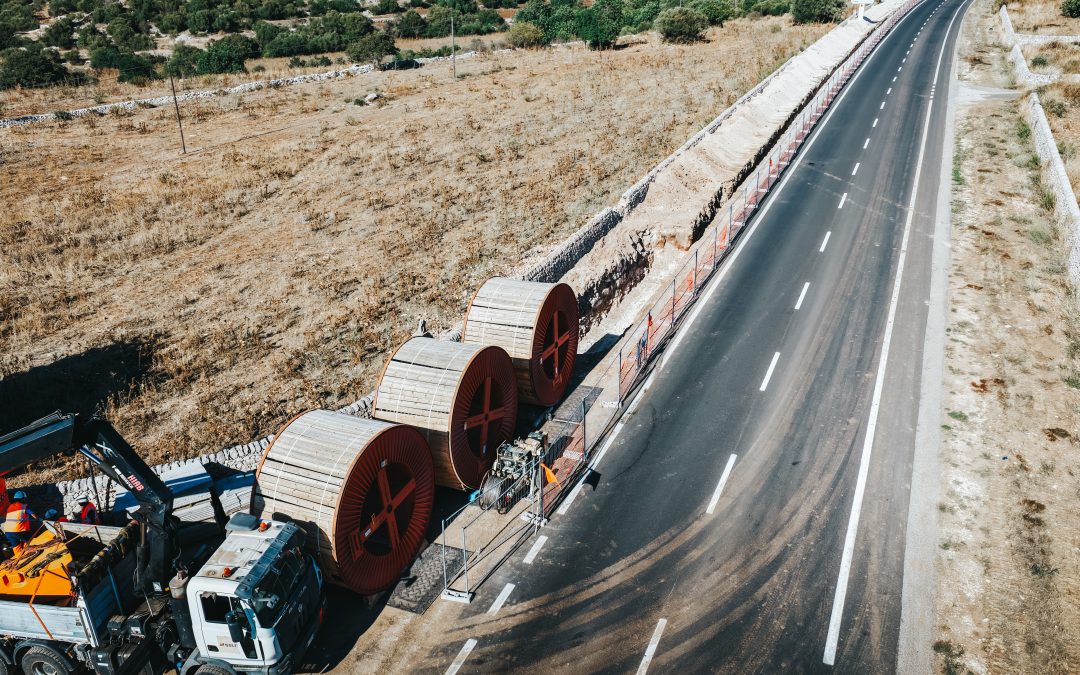The second electricity interconnector between Malta and Sicily, a project aimed at strengthening Malta’s energy security and supporting the country’s decarbonization goals, has reached another important milestone, with physical works being carried out in parallel in both Malta and Italy.
A delegation led by Energy Minister Dr Miriam Dalli and European Funds Minister Dr Stefan Zrinzo Azzopardi visited the ongoing works in Ragusa, Sicily. Hosted by Interconnect Malta Ltd (ICM), Maltese journalists received a detailed presentation of the project and visited sites where trench works and cable pulling are taking place. At the Ragusa Terminal Station, the delegation visited the site where a new shunt reactor will be installed. Meanwhile the production of the onshore and offshore cables is advancing whilst the construction of a culvert at the Magħtab Terminal Station is also complete.
The second interconnector, estimated at a total €300 million and co-financed by the 2021–2027 European Regional Development Fund (ERDF) Programme, is a 122-kilometre, 225MW, high-voltage alternating current (AC) cable, including 99 kilometres of submarine cable. The capital project will double Malta’s electricity interconnection capacity with the European grid.
“The second interconnector forms a central part of our long-term energy strategy, designed to support a cleaner energy future. The project will enhance and scale up the integration of locally sourced renewable energy, including the floating offshore wind project, driving forward Malta’s decarbonisation goals. These projects lay the groundwork for reaching our 2050 targets while ensuring that Maltese households and businesses continue to benefit from a stable, cleaner, and more efficient energy system,” Minister Miriam Dalli said.
According to the project’s cost-benefit analysis, 13.5 million tonnes of CO2 emissions will be reduced, enhancing its significance in Malta’s long-term decarbonisation strategy.
The second interconnector is also actively contributing to the broader national energy strategy aimed at transforming Malta’s energy mix to cleaner solutions, that includes the development of a 300MW offshore wind farm and Battery Energy Storage Systems (BESS), both essential to Malta’s shift toward cleaner energy and long-term grid stability.
Minister Zrinzo Azzopardi highlighted the importance of the second interconnector as Malta’s largest ERDF-funded operation, made possible through substantial EU support. He underlined the government’s determination to deliver projects that once seemed out of reach, and that today are part of the sustainability efforts under Malta Vision 2050.
“This interconnector is not just about infrastructure. It is about guaranteeing a secure, resilient, and sustainable energy future for our people. Together with our European partners, we are turning this vision into reality,” Minister Zrinzo Azzopardi said.
Interconnect Malta chairman Godwin Agius said: “The second interconnector is a massive undertaking, built on state-of-the-art technology, which will play a key role in Malta’s transition to cleaner energy, bringing us closer to our national climate objectives and to the government’s vision of achieving a carbon-neutral economy by 2050 – an achievement that will ultimately translate into a better quality of life for all.”


